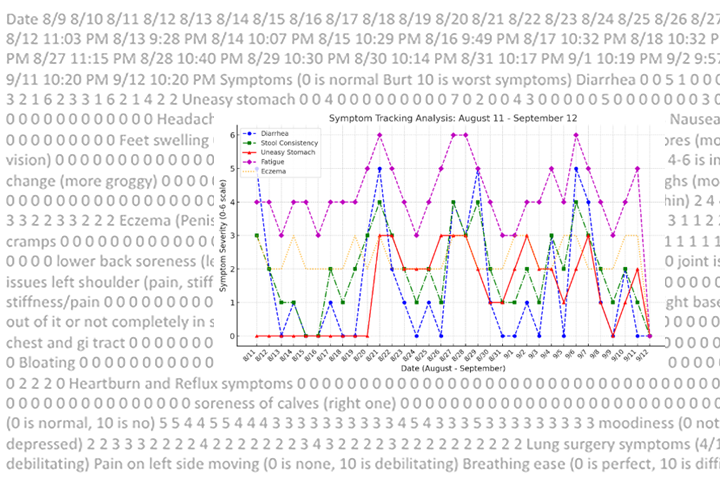Ablative SMART Radiotherapy Could Be Beneficial for Advanced Pancreatic Cancer

Despite advances being made in the understanding and treatment of pancreatic cancer, patients with advanced disease too often face a poor prognosis.
For years, most patients have been treated with chemotherapy, with radiation therapy added to help with local control—not necessarily to add survival time. But like anything in medicine, continuing research sheds new light on long-held beliefs.
Newer bodies of evidence are showing that radiation may indeed prove beneficial for some patients with advanced disease. Techniques using novel delivery technologies permit significant dose escalation to the tumor while sparing nearby organs such as the stomach and intestines. “There was a time in pancreatic cancer care that gemcitabine was used as a single agent with not much success,” says Michael Chuong, M.D., a radiation oncologist with the Miami Cancer Institute, a part of Baptist Health South Florida. “Then nab-paclitaxel was added to the regimen, and patient survival improved. Radiation therapy has also evolved to treat tumors more precisely and with much higher doses that might completely eradicate tumors and significantly prolong the survival of patients who are not eligible for surgery.”
Chuong, who is the Medical Director of Proton Therapy and MRI-Guided Radiation Therapy and the Director of Radiation Oncology Clinical Research at the Miami Cancer Institute, is also a principal investigator on the SMART trial. The acronym stands for Stereotactic MRI-guided on-table Adaptive Radiation Therapy, and the trial is a five-year, phase II, prospective multi-institutional one. Its goal: recruit 133 patients with borderline resectable or inoperable locally advanced disease to evaluate the safety and efficacy of ablative magnetic resonance imaging (MRI)-guided radiation therapy delivered on the MRIdian® Linac over five treatments.
To be eligible for the trial, patients must have had stable disease after at least three months of chemotherapy. Participants are followed every three months for toxicities and outcomes. The primary endpoint is safety at 90 days; secondary endpoints are disease-free survival and overall survival.
The trial has met its recruitment goals, and researchers are following up with study participants, as well as reviewing and crunching interim data.
Chuong believes the prospective nature of the trial will provide some important clarity to radiation’s potential role. “This type of precision radiation therapy only became available a few years ago, and, based on published retrospective data from our institutions and others, I am excited by the potential for this to not only achieve long-term survival for patients with a historically poor prognosis, but also to do so very safely,” he says. “Prospective data demonstrating that these outcomes can be achieved would change the paradigm of how we treat advanced pancreas cancer, and offer hope to patients that they might live for many years instead of only a few months.”
Benefits of New Technology
The MRI-guided linac system, called the MRIdian® Linac, used in the SMART trial was developed by Cleveland, Ohio-based ViewRay, Inc. It’s the world’s first MRI-guided radiation therapy system that can image and treat cancer patients simultaneously, according to the company. ViewRay is the sponsor of the SMART trial. Elekta Unity is another MR-guided-linac system available today, made by Elekta.
Very simply, the technology integrates a high-strength MRI machine with a linear accelerator. At one time, both were used separately to treat cancers, but now they are being used simultaneously. The result is heightened precision. The MRI produces high-quality images in real time throughout the entirety of treatment delivery, and the linear accelerator maintains a sharp focus on the tumor while targeting it with very high-energy radiation beams.
The very act of breathing can cause a tumor to shift position. That shift makes it extremely difficult to keep radiation beams precisely focused on the tumor throughout the treatment session. It is especially difficult with organs like the pancreas, which is embedded deep within the abdomen and is surrounded by other important structures. In the past, due to this shifting, radiation oncologists could not deliver enough radiation to the pancreas without causing damage to other abdominal structures.
But the MRIdian® Linac continually adjusts the radiation dose to account for movement. It is able to continuously track the position of the tumor, and if it moves outside of a certain position, the machine automatically will hold treatment until the tumor returns to the correct position and then treatment resumes. This advanced capability greatly enhances treatment safety and treatment accuracy.
Another plus is that patients can generally start treatment sooner compared to treatment on a standard linac. The high quality of the MRI images can show the tumor itself during treatment. Because of this, doctors don’t have to first place metallic fiducial markers into the tumor, something that is required on standard linacs to better identify the tumor’s position.
Promising Data
At the 2021 American Society for Radiation Oncology (ASTRO) annual meeting, Chuong presented data from a study of 148 inoperable pancreatic cancer patients treated with MRIdian SMART. Results demonstrated improvement in overall survival and quality of life. Findings showed a longer median survival of 26 months compared to the 12 to 15 months typically seen in patients receiving chemotherapy and standard radiation therapy. The two-year overall survival was more than 50 percent, double the expected two-year rate of 20 percent with lower dose radiation.
Patients came from three institutions: the Miami Cancer Institute, Henry Ford Health (Michigan), and Acibadem Healthcare Group (based in Turkey). Researchers used a biologically effective dose of 100 Gray (Gy) delivered in five fractions; doses delivered on standard linacs are ~60 Gy. Median follow-up was 16 months from diagnosis. Local control of the tumor at one year and two years was 94.6 percent and 83 percent, respectively. Median overall survival was 26 months.
Similar studies have shown median survival for inoperable pancreatic patients receiving chemotherapy and standard radiation therapy to be only about 12 to 15 months. Outcomes with MRIdian SMART were achieved with low rates of major adverse events, which were no higher than those reported with standard radiation therapy.
In a study recently published in the journal Frontiers in Oncology, Chuong presented data from the Miami Cancer Institute. This single institution retrospective analysis included 66 inoperable non-metastatic pancreatic cancer patients who received induction chemotherapy and then five-fraction radiation therapy on the MRIdian® Linac.
The study demonstrated that induction chemotherapy and five-fraction A-SMART, short for ablative stereotactic magnetic resonance image-guided adaptive radiation therapy, appears to significantly improve local control and overall survival in patients with initially inoperable pancreatic cancer compared to historical outcomes from non-ablative radiation therapy. For example, A-SMART achieved a two-year overall survival of nearly 50 percent, whereas historical non-ablative radiation outcomes are only 20 percent. Severe toxicity was also minimal.
“We are excited by outcomes from our institution and others demonstrating that an MRI-linac is more effective and safer for patients compared to other radiation therapy options,” Chuong notes. “The potential for this novel technology to transform how we treat pancreas cancer is truly exciting and inspiring.”






